
- CBSE Class 6 Maths Notes
- CBSE Class 6 Maths Notes
- Chapter 1 - Knowing Our numbers
- Chapter 2 - Whole numbers
- Chapter 3 - Playing with numbers
- Chapter 4 - Basic Geometrical Ideas
- Chapter 5 - Understanding Elementary Shapes
- Chapter 6 - Integers
- Chapter 7 - Fractions
- Chapter 8 - Decimals
- Chapter 9 - Data Handling
- Chapter 10 - Mensuration
- Chapter 11 - Algebra
- Chapter 12 - Ratio and Proportion
- Chapter 13 - Symmetry
- Chapter 14 - Practical Geometry
Chapter 10 - Mensuration
Introduction to Mensuration
We use different units to measure different things. For example, to measure time, we use, minutes, seconds, and hours. Similarly, to measure distance, we use kilometres, metres, etc.
In fact, there is a dedicated branch known as metrology that deals with measurements.
What is Mensuration?
Mensuration is a part of geometry that deals with the study of different geometrical shapes and their measurements. We use mensuration to calculate the length, breadth, depth, area, and volume of different geometrical shapes.
There are two types of geometric shapes: 2D and 3D.
2D Shapes
A 2D shape is bounded by three or more straight lines or a closed circle in a plane. They have two dimensions: length and breadth and are therefore called 2D figures or shapes. For 2D shapes, we measure area and perimeter.
Examples of 2D shapes include circle, rectangle, square, triangle, trapezoid, etc.
3D Shapes
A 3D shape is bounded by a number of planes. These are also referred to as solid shapes.
3D shapes have height (or depth), in addition to length and breadth.
Some well-known 3D shapes: cube, cone, pyramid, cylinder, prism, and cuboid.
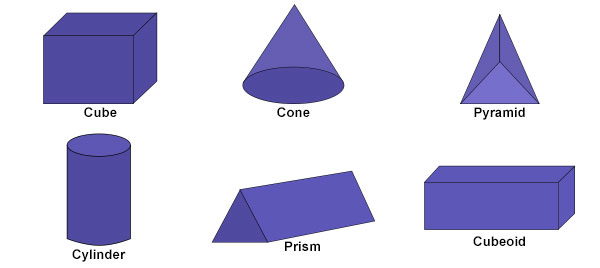
Perimeter
The length of the boundary of a closed curve is known as perimeter. We cannot find the perimeter of an open curve.
Perimeter of a Square
A square has four equal sides. So, we have the formula,
Perimeter of a square = Sum of its sides
Representing the length of each side as L and perimeter as P,
P = 4 × L
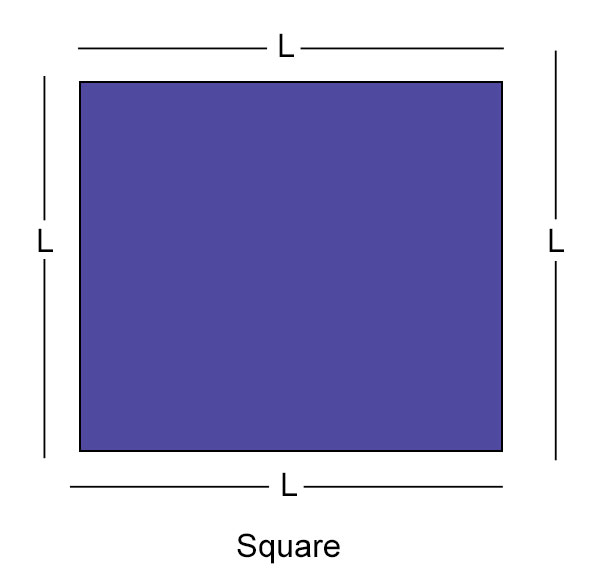
Perimeter of a rectangle
Opposite sides are equal in a rectangle.
Let L = length and B = breadth, then its perimeter,
P = L + L + B + B
or, P = 2L + 2B
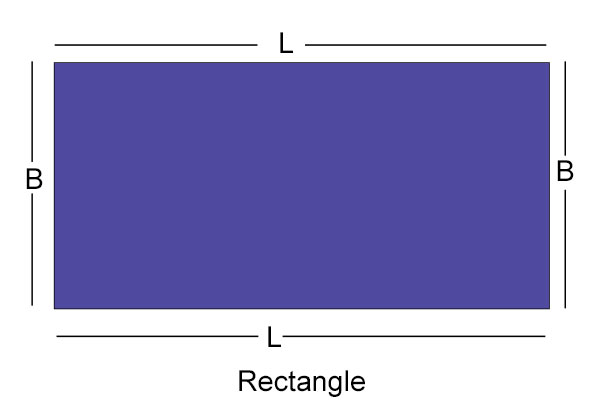
Perimeter of a Regular Polygon
A polygon is called regular if all its sides and angles are equal.
Assuming L = length of each side,
Perimeter of an equilateral triangle = 3 × L = 3L
Perimeter of a square = 4 × L = 4L
Perimeter of a regular pentagon = 5 × L = 5L
Perimeter of a regular hexagon = 6 × L = 6L
The perimeter of a regular polygon is the number of sides it has multiplied by the length of each side. Hence,
P = n × L
where "n" is the number of sides of the regular polygon.
Area of Rectangles and Squares
Rectangle and square are the two widely used regular shapes. We can use a graph paper or squared paper to find the area of a rectangle or a square.
Area of a Rectangle
The opposite sides of a rectangle are of equal length. The longer side of a rectangle is called length and the shorter side is called breadth.
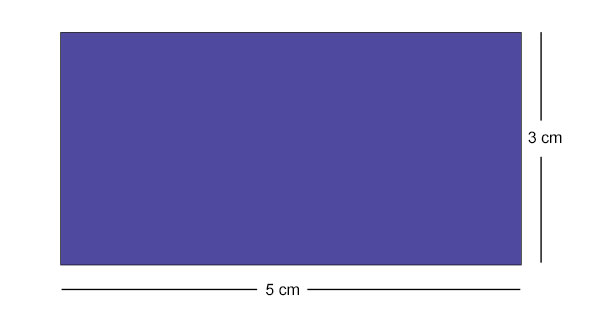
Let's use the graph paper to find its area.
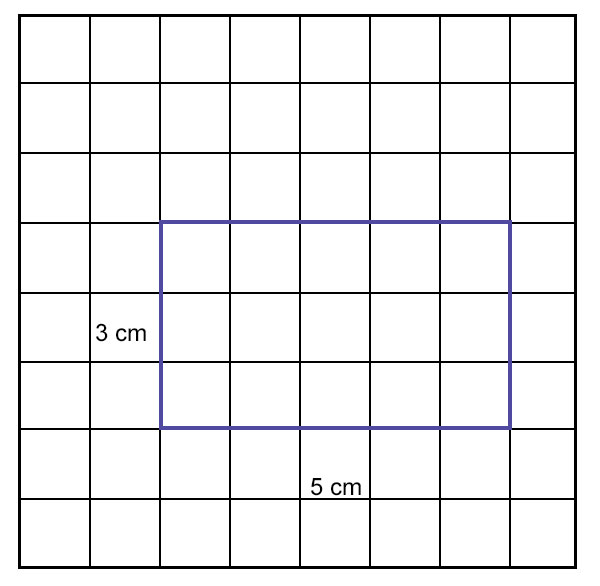
The rectangle has enclosed 15 full squares.
Each square is of dimension 1 sq. cm.
So, the area of the rectangle is 15 sq. cm.
Observe that,
15 sq. cm = (5 cm × 3 cm) = (length × breadth)
From this, we can conclude that,
Area of a rectangle = (length × breadth)
Example
A rectangle has a length of 8 cm and a breadth 5 cm. What is its area?
Area of the rectangle = Length × breadth
= 8 cm × 5 cm
= 40 sq. cm.
Area of a Square
A square has four sides of equal length.
Let's take a square of side 8 cm and find its area.
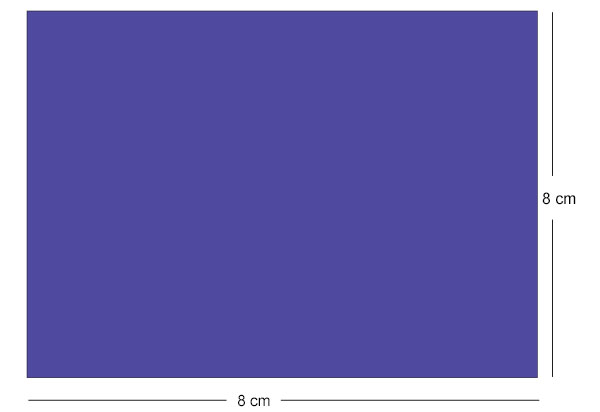
Plot the square on a graph paper.
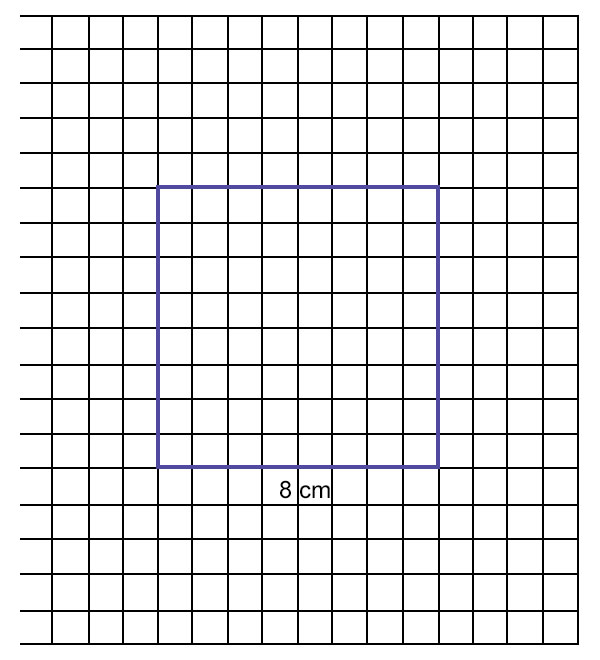
The square encloses 64 full squares. Hence, its area is 64 sq. cm.
Observe that, the area of the square,
64 sq. cm. = (8 cm × 8 cm) = (Side × Side)
We can conclude that,
Area of a square = Side × Side
Example
A square has a side of length 10 cm. Find its area.
Area of the square = Side × Side
= 10 cm × 10 cm
= 100 sq. cm.
Area of Irregular Shapes
The region enclosed within the boundary of a figure is called its area. We normally use a squared paper (or graph paper) to find the area of regular and irregular shapes.
How to Use the Squared Paper?
There are some rules of how to use a squared paper to find the area of a closed figure.
- A complete covered square = 1 sq. unit
- A ${1}/{2}$ covered square = ${1}/{2}$ sq. unit
- Less than ${1}/{2}$ covered square = 0 sq. unit
- More than ${1}/{2}$ covered square = 1 sq. unit
Area of an Irregular Figure
Let's use the above rules to find the area of an irregular figure.
Example: Find the area of the given figure using a squared paper.
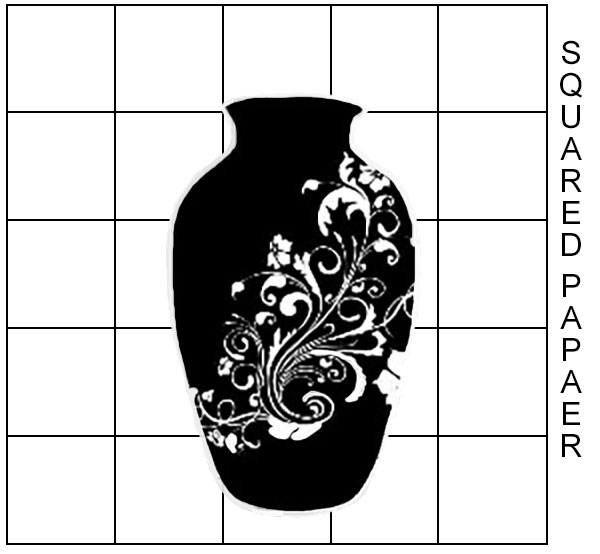
Solution: Let's draw an outline of the figure and count the number of fully covered, ${1}/{2}$ covered, more than and less than ${1}/{2}$ covered squares.
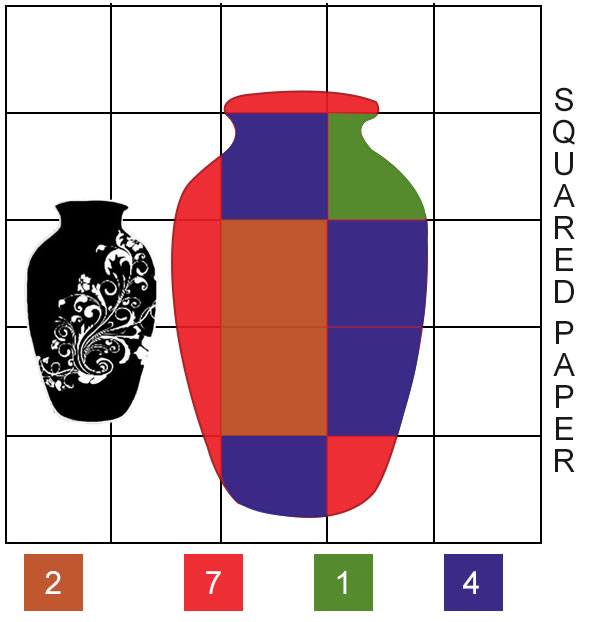
Now, let's apply the rules to calculate the area:
| Covered Area | Number | Area (sq. unit) |
|---|---|---|
| Fully Covered | 2 | 2 × 1 = 2 |
| ${1}/{2}$ Covered | 1 | 1 × ${1}/{2}$ = ${1}/{2}$ |
| More than ${1}/{2}$ covered | 4 | 4 × 1 = 4 |
| Less than ${1}/{2}$ covered | 7 | 7 × 0 = 0 |
Total area = 2 + ${1}/{2}$ + 4 = 6${1}/{2}$ sq. unit.
To Continue Learning Please Login